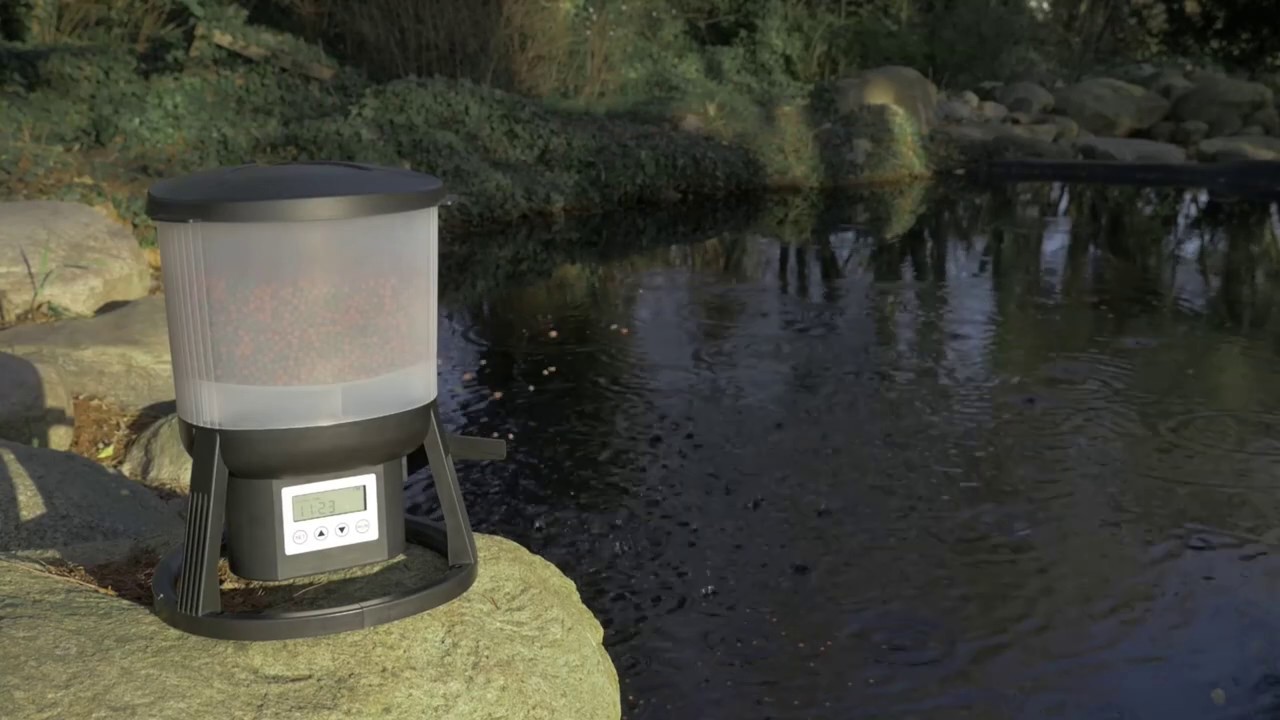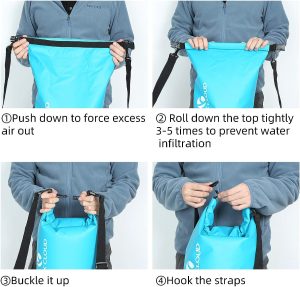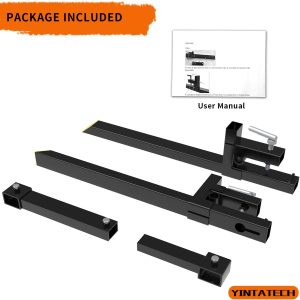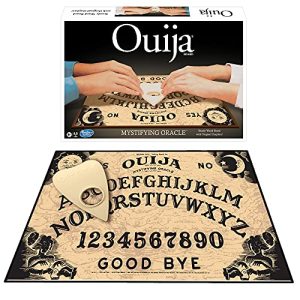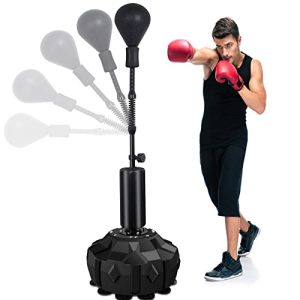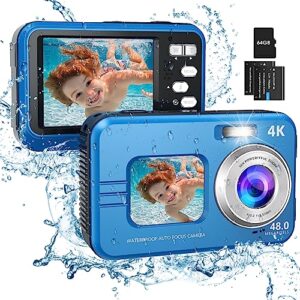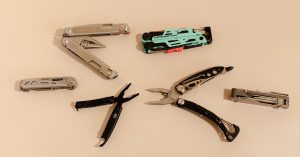Contents
If you’re a proud owner of a fish pond and want to make sure your fish are well-fed even when you’re not around, a fish pond automatic feeder is the perfect solution for you. This article will guide you through the simple steps of using a fish pond automatic feeder, ensuring that your fish are provided with their daily meals without any hassle. Whether you’re planning a short vacation or have a busy schedule, this handy device will keep your fish well-cared for and happy.
Installation and Setup
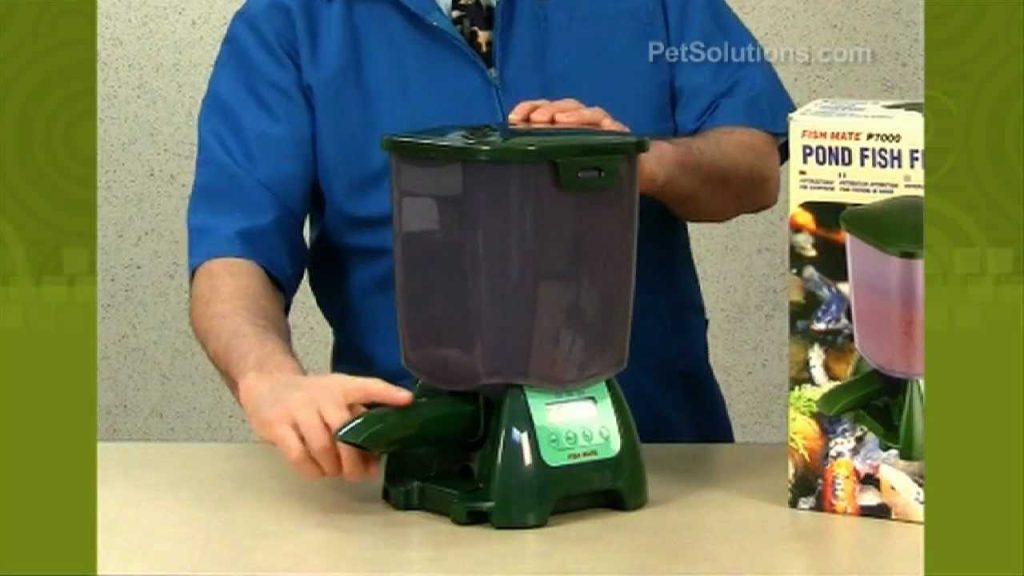
Choosing the Right Automatic Feeder
When it comes to choosing the right automatic feeder for your fish pond, there are a few factors to consider. First, think about the size and capacity of the feeder. You want to make sure it can hold enough fish food to last for your desired feeding schedule. Additionally, consider the compatibility of the feeder with your pond design. Some feeders may work better in certain pond environments than others. Lastly, look for a feeder that is durable and weather resistant, as it will be exposed to the elements.
Determining the Feeding Schedule
Setting up a feeding schedule is an important aspect of using a fish pond automatic feeder. Start by observing your fish’s feeding behavior and appetites. This will help you determine how often they should be fed. Keep in mind that overfeeding can lead to poor water quality and health issues for your fish. Once you have determined the appropriate feeding frequency, program the feeder accordingly.
Positioning the Feeder
The placement of the automatic feeder is crucial to ensure optimal feeding for your fish. It’s important to position the feeder in an area where the fish can easily access the food. Avoid placing it too close to any other objects or plants that may obstruct the fish’s access. Additionally, make sure the feeder is securely mounted to prevent it from falling into the water.
Adjusting the Dispensing Amount
Adjusting the amount of food dispensed by the automatic feeder is essential to prevent overfeeding or underfeeding. Most feeders allow you to control the portion size, allowing you to customize the amount of food your fish receive. Start by setting the dispenser to a small amount and observe your fish’s response. If they finish the food quickly, gradually increase the amount until you find the right balance.
Programming and Adjusting
Understanding the Control Panel
To effectively program and adjust your fish pond automatic feeder, it’s important to understand the control panel. Familiarize yourself with the buttons and settings available on the feeder. Each feeder may have slightly different controls, so consult the user manual if needed.
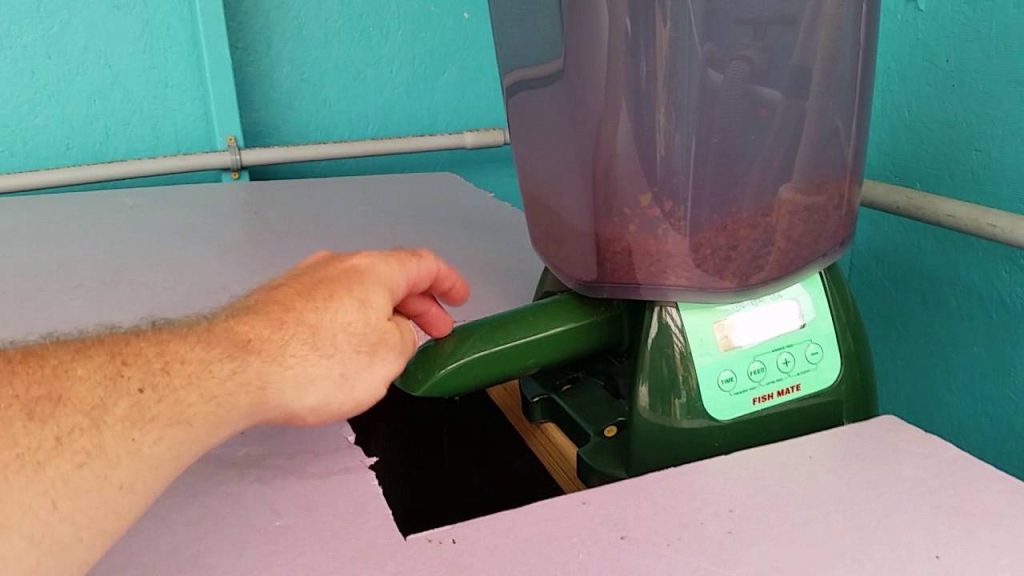
Setting the Time and Date
Properly setting the time and date on your automatic feeder is crucial for accurate feeding schedules. Most feeders have a built-in clock that allows you to set the time and date easily. Ensure that the time and date are correct to prevent any confusion or inconsistencies in the feeding program.
Choosing the Feeding Mode
Automatic feeders often offer different feeding modes to suit the needs of your fish. Common options include manual feeding, preset feeding intervals, and custom feeding schedules. Choose the feeding mode that aligns with your feeding preferences and requirements.
Adjusting the Feeding Amount
In addition to setting the feeding schedule, you can also adjust the feeding amount on many automatic feeders. This allows you to control the portion size for each feeding. Experiment with different portions to ensure your fish are receiving an adequate amount of food without overfeeding.
Maintenance and Troubleshooting
Cleaning the Feeder
Regular cleaning of your fish pond automatic feeder is essential to maintain its performance and prevent any build-up of debris. Follow the manufacturer’s instructions for cleaning the feeder properly. Remove any leftover food or residue, and ensure the feeder is dry before use.
Replacing Batteries or Power Source
If your automatic feeder runs on batteries, it’s important to regularly check and replace them as needed. Weak batteries can cause the feeder to malfunction or stop working altogether. If your feeder is powered by an electrical source, ensure that the power supply is stable and functioning correctly.
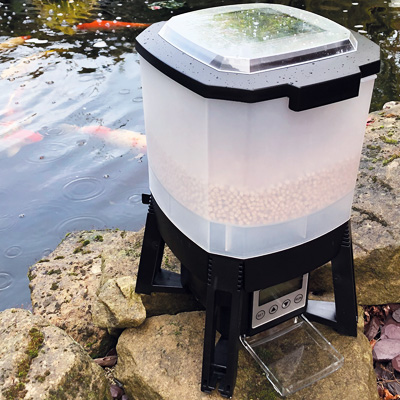
Troubleshooting Common Issues
Sometimes automatic feeders may encounter issues such as clogs, dispensing errors, or motor malfunctions. Before contacting customer support, perform some basic troubleshooting. Check for any blockages in the feeder, ensure the food is not clumping, and confirm that the settings are programmed correctly. Consult the user manual or the manufacturer’s website for detailed troubleshooting steps.
Tips for Optimal Feeding
Observe Fish Feeding Behavior
One of the best ways to ensure your fish are getting the right amount of food is to observe their feeding behavior. Pay attention to how quickly they consume the food and if any food is being left uneaten. Adjust the feeding schedule or amount accordingly to meet the needs of your fish.
Avoid Overfeeding
Overfeeding is a common issue in fish ponds and can lead to poor water quality and health problems for your fish. It’s important to resist the temptation to feed your fish excessively. Stick to a consistent feeding schedule and avoid feeding them more than they can consume in a few minutes.
Consider Feeder Placement
The placement of the automatic feeder can impact the effectiveness of the feeding process. Consider placing the feeder in an area where the fish can easily access the food without any obstructions. Make sure there are no plants or decor blocking their path to the feeder.
Use Quality Fish Food
The type and quality of fish food you use can greatly impact the health and well-being of your fish. Opt for high-quality fish food that is specifically formulated for the species you have in your pond. This will provide them with the necessary nutrients and help prevent any digestive issues.
Benefits of Using an Automatic Feeder

Consistent Feeding Schedule
One of the main benefits of using an automatic feeder in your fish pond is the ability to maintain a consistent feeding schedule. With an automatic feeder, the fish will be fed at the same time and in the same quantities every day, ensuring they receive a regular and balanced diet.
Convenience and Time Saving
Automating the feeding process with an automatic feeder saves you time and effort. You no longer have to manually feed your fish every day, allowing you to enjoy your pond without constant feeding responsibilities. This is especially beneficial for those with busy schedules or when you’re away from home.
Reduced Risk of Overfeeding
Automatic feeders help reduce the risk of overfeeding, which can have detrimental effects on fish health and water quality. By carefully controlling the portion size and feeding frequency, you can ensure your fish receive the right amount of food without overindulging.
Better Control over Fish’s Diet
With an automatic feeder, you have better control over your fish’s diet. You can select specific types of food and adjust the feeding amount to meet their nutritional needs. This allows you to provide a well-balanced diet and tailor it based on the species and individual needs of your fish.
Factors to Consider
Size and Capacity of the Feeder
When choosing an automatic feeder, consider the size and capacity that will best suit your fish pond. Ensure that the feeder can hold enough food to last for your desired feeding schedule without constant refilling. Additionally, check the dimensions to ensure it fits comfortably in your pond without obstructing the fish’s movement.
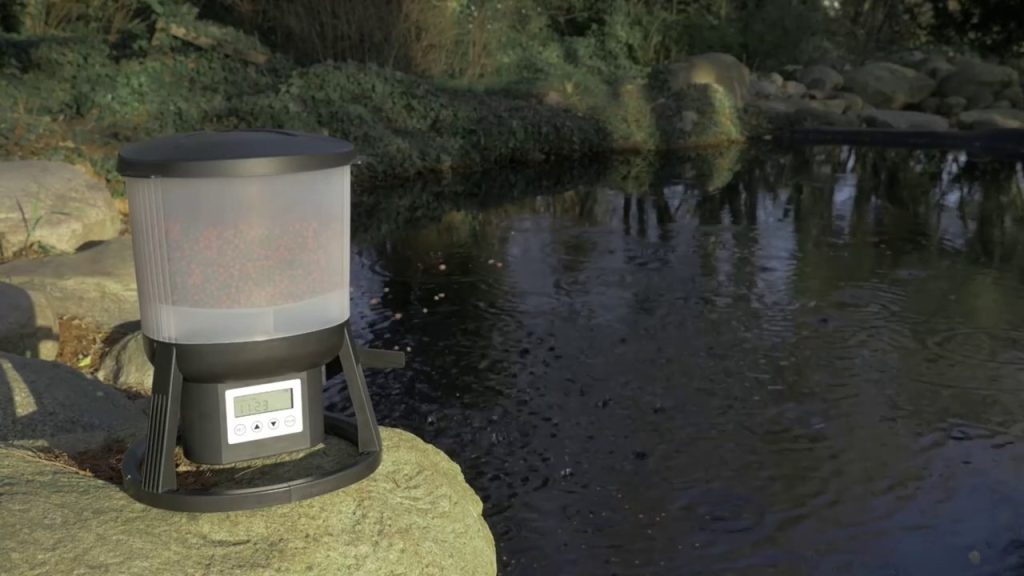
Compatibility with Pond Design
Every fish pond is unique, and it’s important to consider the compatibility of an automatic feeder with your pond’s design. Some feeders may work better in certain pond environments than others. Take into account factors such as the water depth, the presence of plants or decor, and any other features that may affect the feeder’s function.
Durability and Weather Resistance
An automatic feeder for your fish pond should be durable and weather resistant. It will be exposed to the elements, including rain, heat, and potentially harsh weather conditions. Look for a feeder that is made with high-quality materials and is designed to withstand outdoor conditions.
Alternative Feeding Methods
Manual Feeding
While automatic feeders offer convenience, manual feeding can still be a viable option for some pond owners. Manual feeding allows you to have direct interaction with your fish and observe their behavior closely. It can be a more hands-on experience and is often preferred by those who have a small number of fish or who enjoy the personal interaction.
Feeding Rings
For ponds with multiple fish or areas with strong water currents, feeding rings can be a useful alternative. Feeding rings float on the water’s surface and help contain the food in one area, preventing it from dispersing too quickly. This allows all fish to have equal access to the food and reduces the chances of any fish being left hungry.
Floating Feeders
Floating feeders are another alternative to automatic feeders. These devices consist of floating platforms that hold the fish food and allow it to slowly disperse into the water. Floating feeders can be beneficial for larger ponds where the fish may spread out, ensuring that all fish have access to the food.
Safety Precautions
Ensure Feeder is Securely Mounted
To prevent accidents and ensure the safety of your fish, it’s essential to securely mount the automatic feeder. Make sure it is installed in a stable position and cannot easily be knocked over or fall into the water. Double-check the mounting mechanism periodically to ensure it remains secure.
Regularly Inspect for Damage
Regularly inspecting the automatic feeder for any signs of damage is important for both its functionality and safety. Check for any cracks, loose parts, or signs of wear and tear. If you notice any issues, address them immediately to prevent further damage or potential hazards.
Keep Feeding Area Clean
Maintaining a clean feeding area is crucial for the health and well-being of your fish. Remove any excess food or debris that may accumulate in the feeding area, as this can negatively affect water quality and attract pests. Regular cleaning will also prevent any blockages in the feeder and ensure smooth operation.
Monitoring and Adjusting
Regularly Check the Feeder Operation
Even with an automatic feeder, it’s important to regularly check its operation and performance. Ensure that the food is being dispensed correctly and at the programmed intervals. Verify that the feeder is functioning as intended and adjust any settings if necessary.
Observe Fish’s Growth and Health
Regularly observing your fish’s growth and overall health is a crucial part of monitoring their feeding program. Keep an eye on any changes in their appetite, behavior, or appearance. Adjust the feeding amount, schedule, or food type accordingly to ensure their nutritional needs are being met.
Make Adjustments to Feeding Program if Necessary
Fish nutritional needs may vary over time due to factors such as growth, seasonal changes, or specific health requirements. If you notice any issues or changes in your fish, such as weight loss or sluggishness, consider making adjustments to the feeding program. Consult with a fish pond expert or veterinarian for guidance if needed.
Conclusion
By using an automatic feeder in your fish pond, you can enhance your overall pond experience and enjoy the benefits of effortless fish feeding. The convenience and time-saving aspects allow you to better manage your fish’s diet while maintaining a consistent feeding schedule. With proper installation, programming, and maintenance, an automatic feeder can contribute to the health, well-being, and enjoyment of both you and your fish. So sit back, relax, and watch your fish thrive with their new automatic feeding system.

